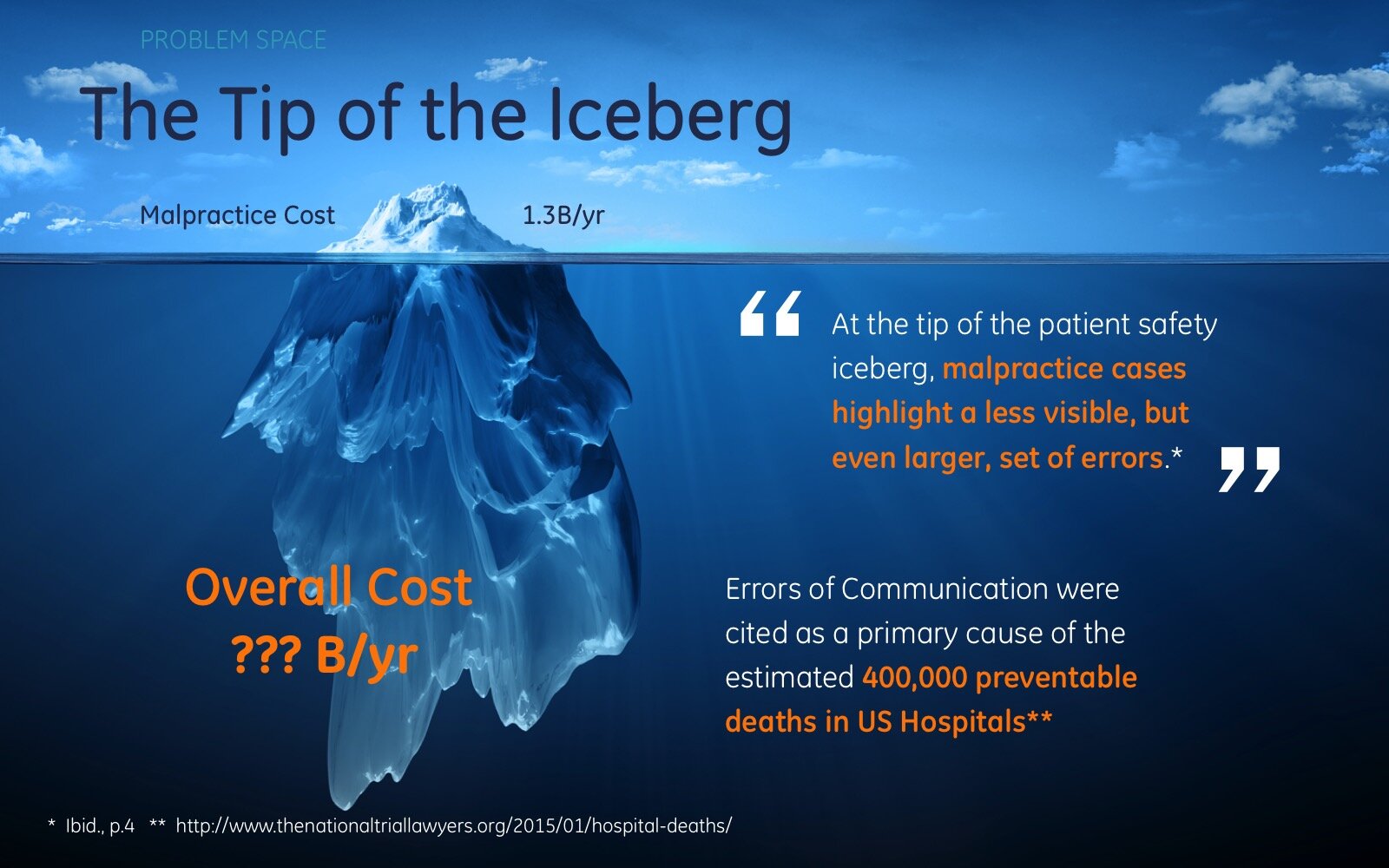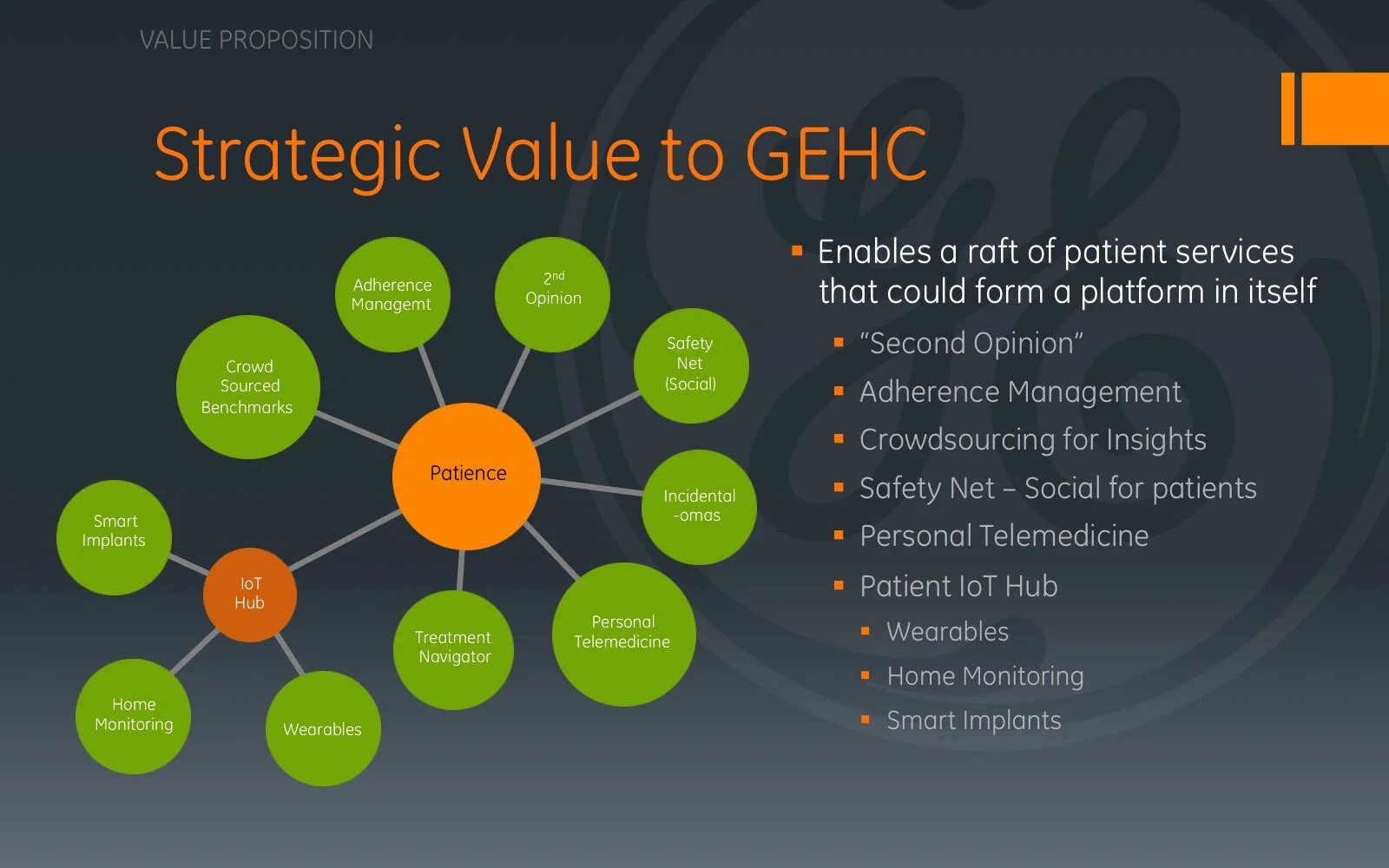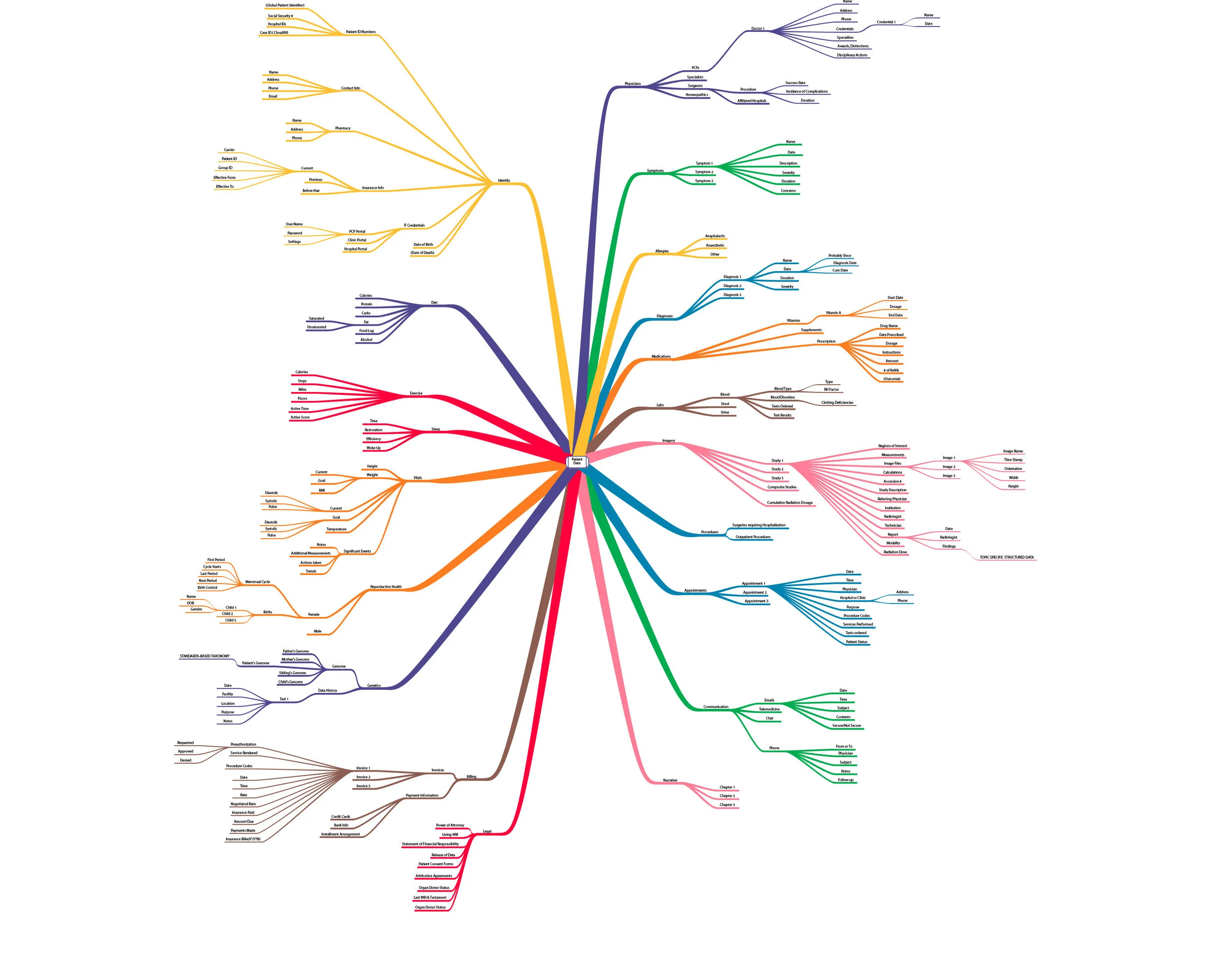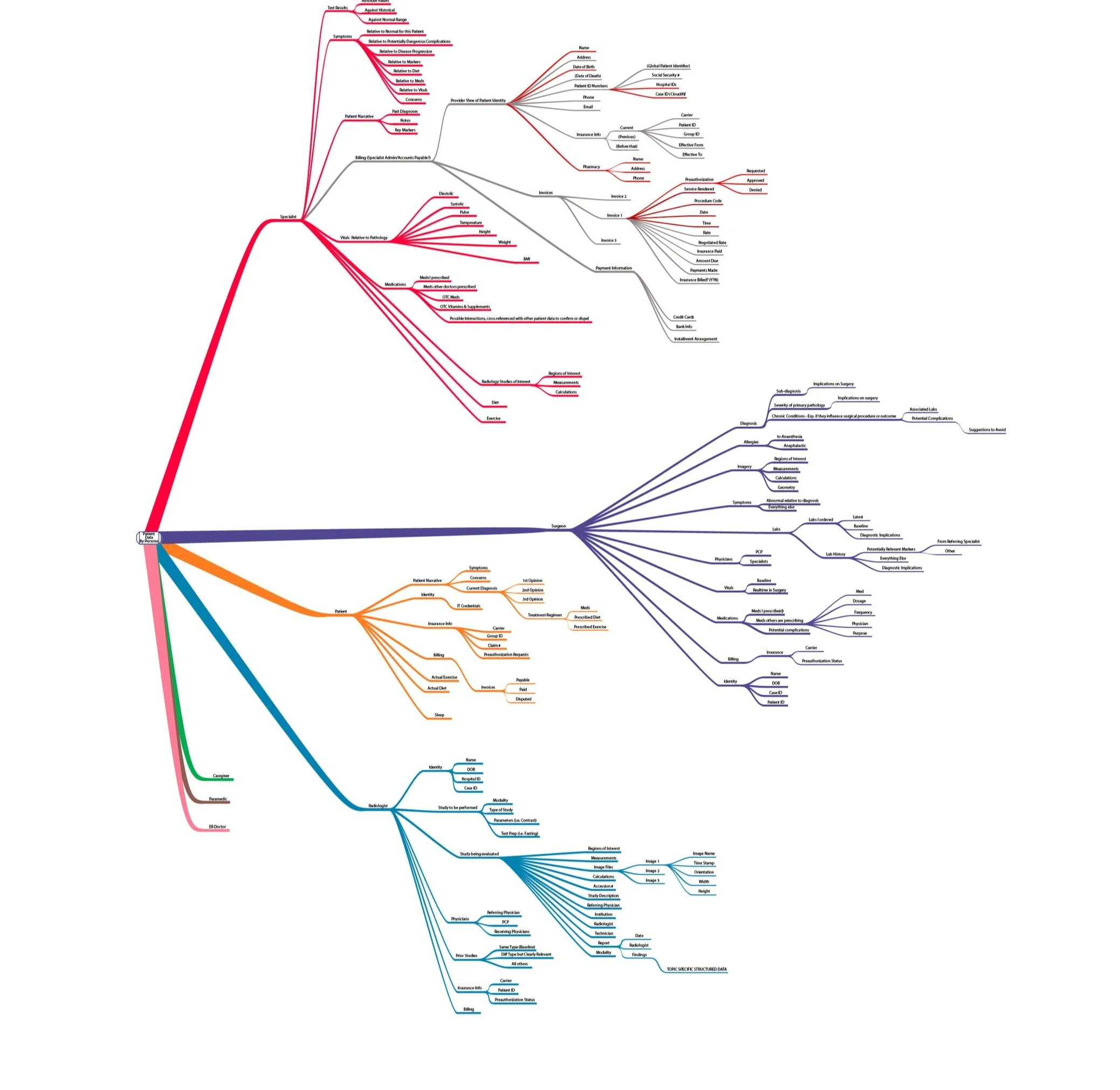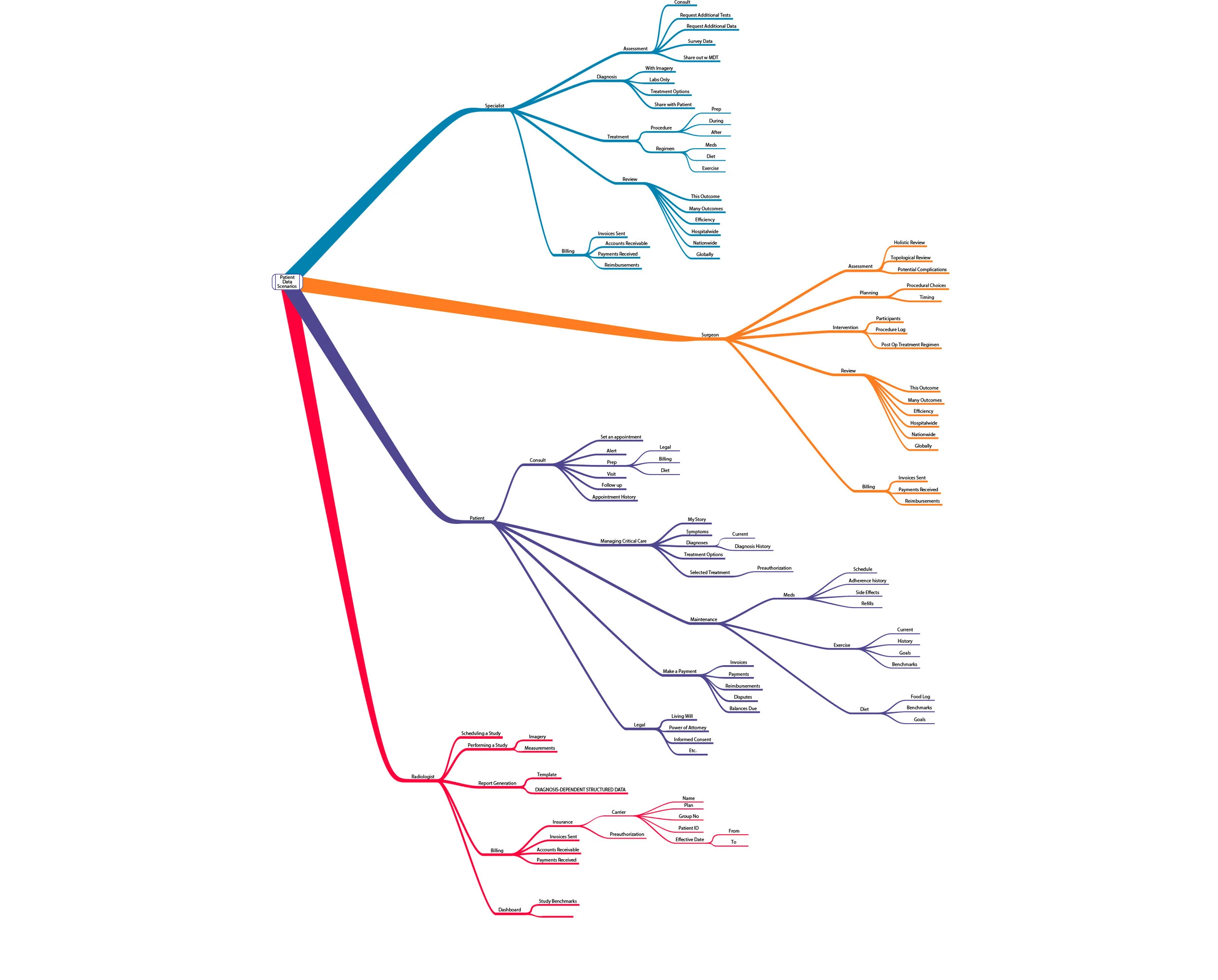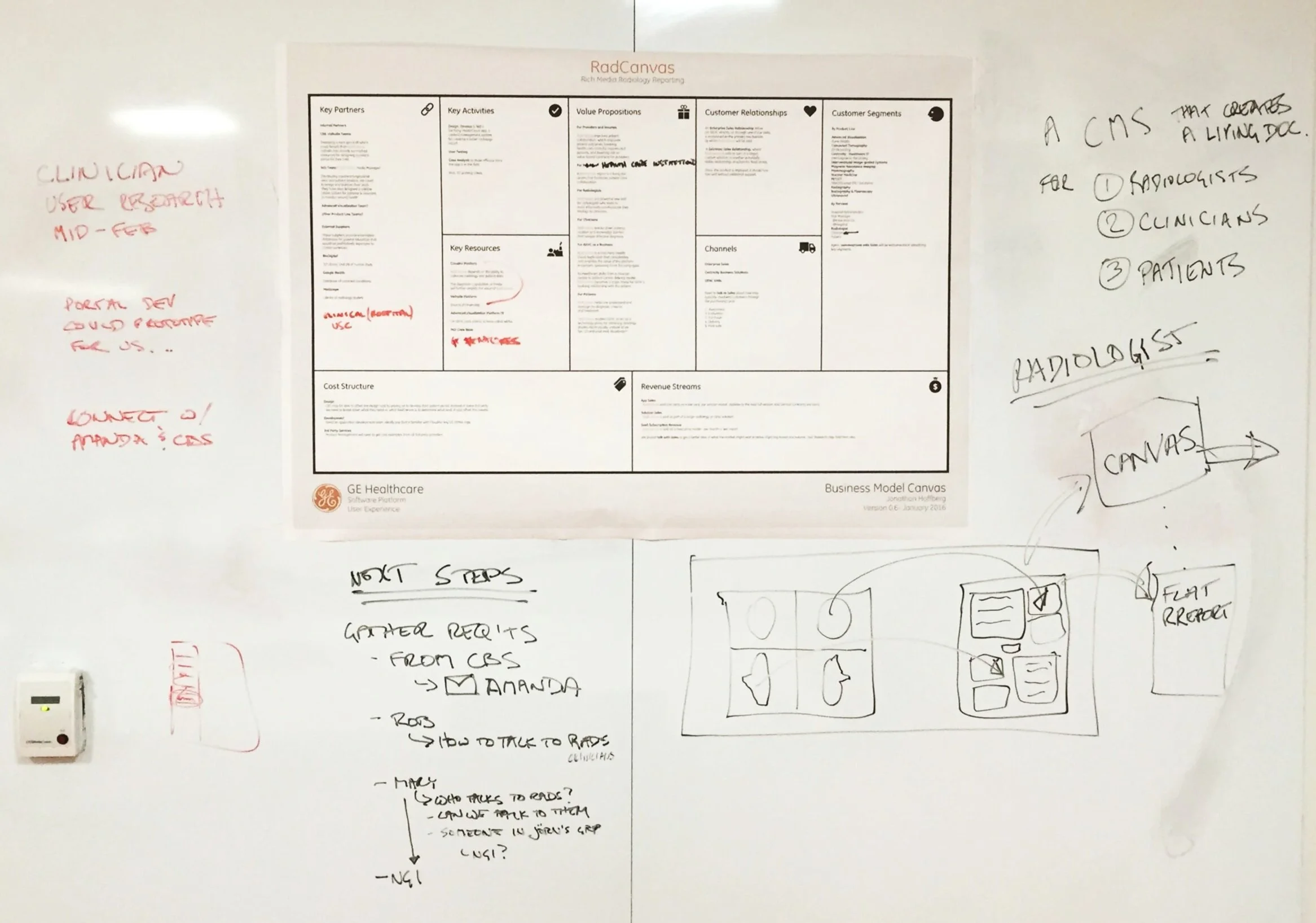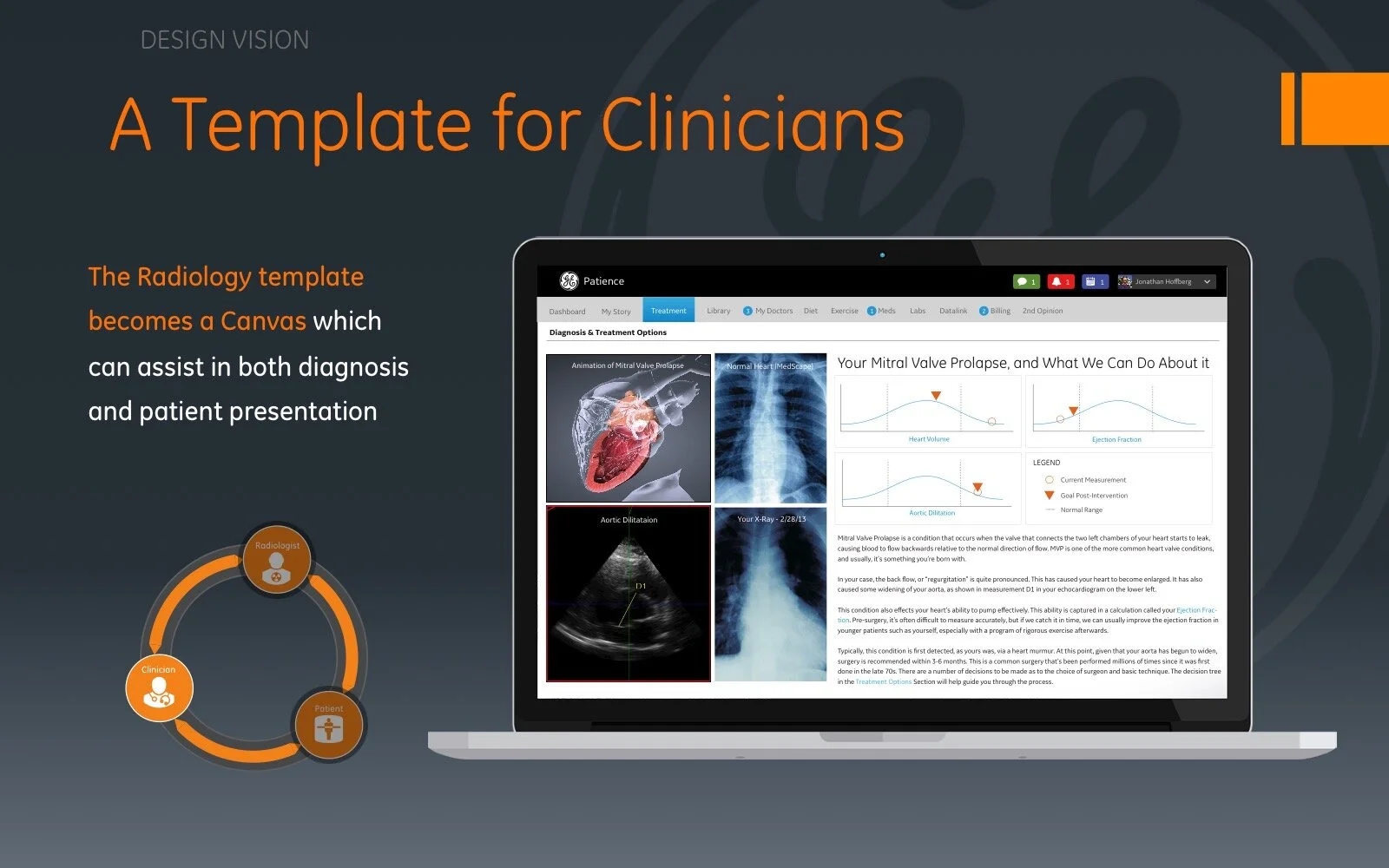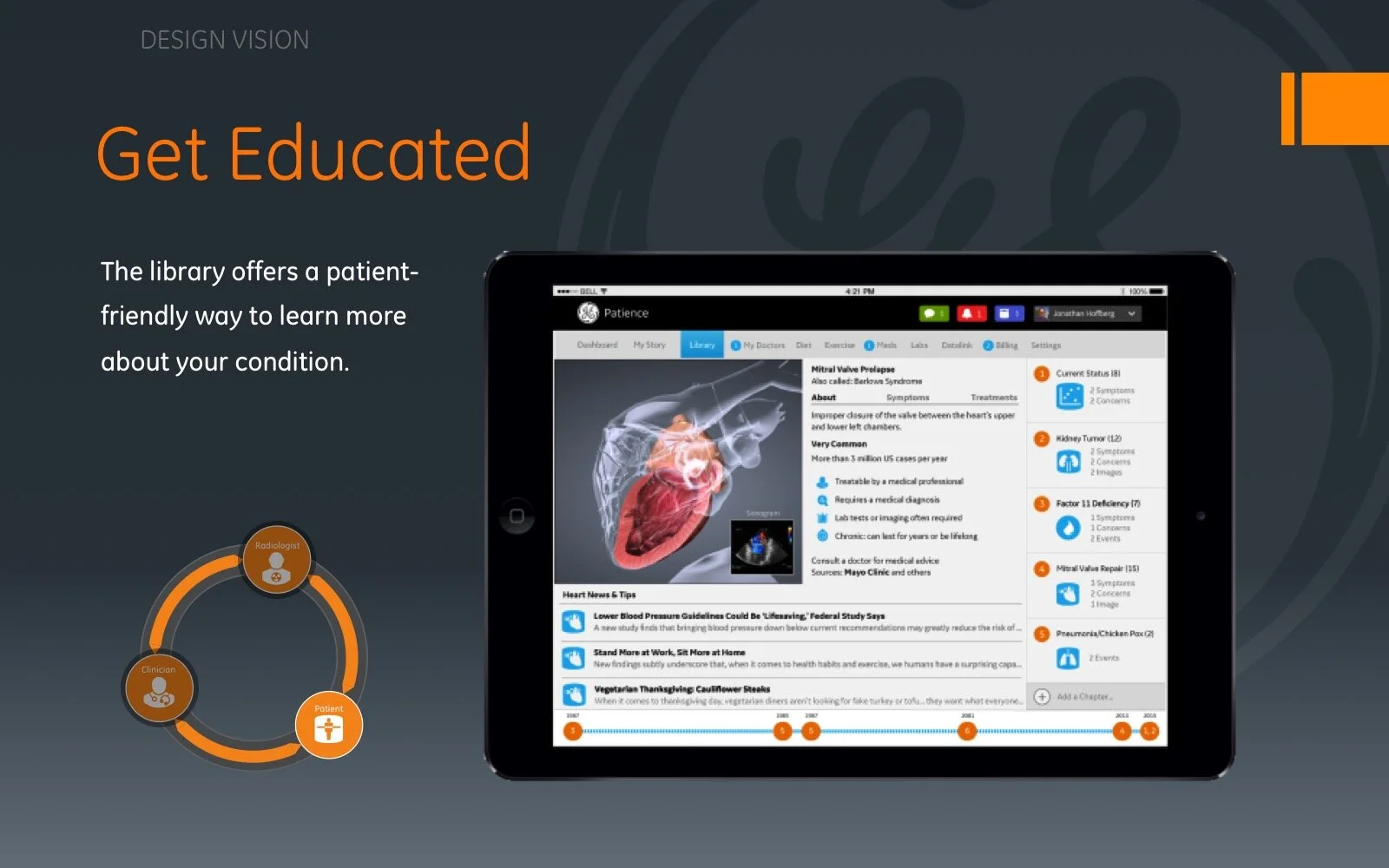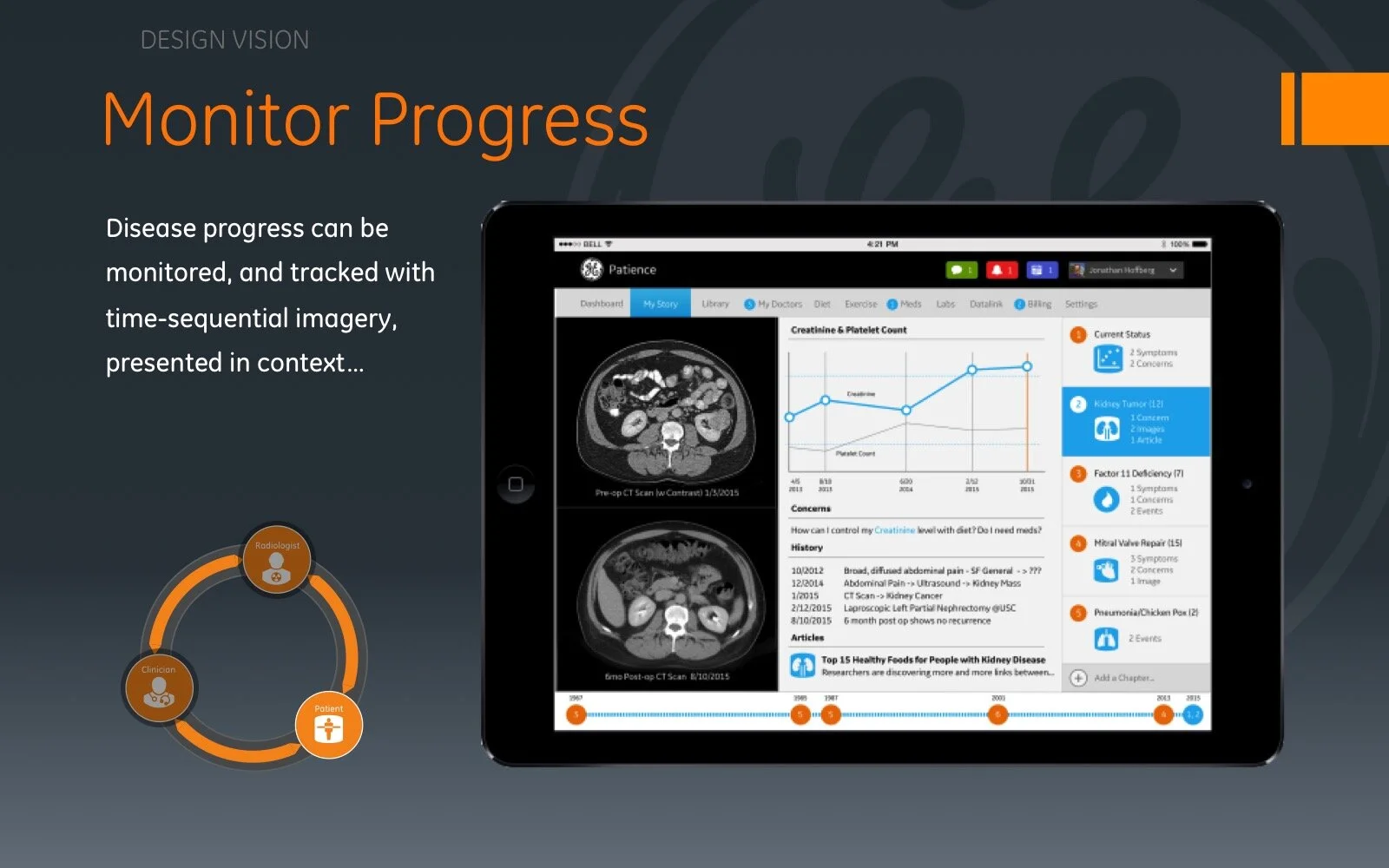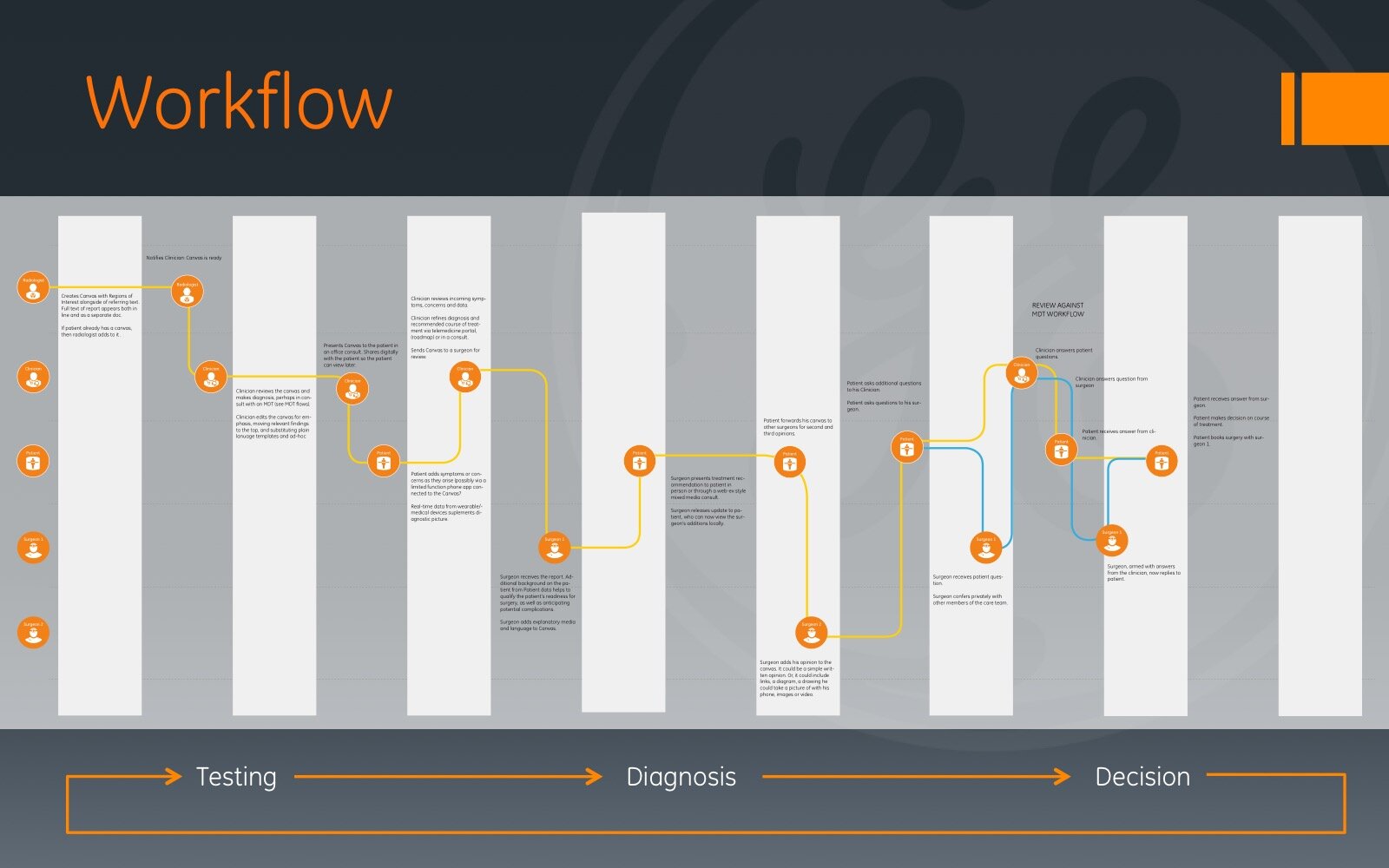Role: Sr. UX Designer
Deliverables: Patient POV deck, Wireframes, Journey Map, Service Blueprint, Data Models
The day after my open heart surgery to repair my mitral valve.
A Patient-Centric Health Care Collaboration Platform
This was me the day after my open heart surgery. I felt like I'd been run over by a truck. And despite my normally hearty constitution, I had the strength of a sick kitten. But I was alive, and otherwise healthy, thanks in particular to a great friend, an unsually skilled surgeon and care team, and a really good health insurance policy. This ordeal, and another less dramatic but still entirely nerve-wracking episode, left me with an abiding interest in applying my skills in whatever way I could to improving the plight of patients who came after me.
As fate would have it, a like minded design manager at GE Healthcare offered just such an opportunity, by hiring me as a Sr. UX Consultant to develop a perspective on the patient as a potential user for new software offerings.
Discovery
GE had commissioned Frog Design to do some discovery work on patient and clinician needs in the critical care pathway, so this was a natural point of departure for my early research. I supplemented this material with a survey of relevant articles on patient care and safety from online sources. Additionally, I began interviewing patients in order to get some primary research material to supplement my own experience.
Roughly speaking, my interview guide looked like this:
- What was the point of inception of their critical care episode
- What did the diagnostic process look like?
- What did the intervention look like?
- Where were the gaps?
- How could they have been improved?
To illustrate and better understand experience, I created a wall-sized journey map that charted the beats in the story from point of inception to recovery. With the memory of my own ordeals still fresh, traversing the Alps seemed an apt analogy for the process.
The following findings emerged as potentially actionable:
- The referral and fee-for-service processes left the uninformed patient at the mercy of a system rife with misaligned incentives.
- Collecting and conveying charts, lab results and image studies was wildly inefficient.
- In many cases, failures of communication from patient to clinician delayed diagnosis or imperiled treatment,
- Also noteworthy, the patients frequently didn’t hear or in some cases receive critical information necessary for successful treatment.
- Errors of communication were cited as a primary cause of the estimated 400,000 preventable deaths in US Hospitals.
From this perspective, a product idea began to form...
“How Might We educate the patient, give them control over their data, amplify their voice, and ensure that they receive and retain critical information?”
Aligning with the Business
While the challenges facing the patient were coming into focus, it seemed clear that the delivering a product focussed primarily on patients was unlikely to find much support. The product and sales organizations were pointed at the hospitals and clinics, so product solutions that addressed communication challenges facing patients would need to fit through these channels.
There was already a product in flight to address communication between the clinician and the care team, called Centricity360. The goal was to address the clinician, then considered an emerging customer from a corporate standpoint, relative to the core customer, and the radiologist.
For the radiologist, GEHC’s core customer, new product teams were exploring new ways to support radiologists as digital image processing and decision support tools infringed on their original domain.
“I saw that by combining these three primary user problems into a single challenge, we could create a vision for a product that could address patient needs while embracing and expanding on the company’s market trajectory.”
The industry-wide shift from fee-for-service to value-based care served as a strong business driver for the core value proposition of improving outcomes by improving communication between patients, clinicians and radiologists.
Ideation
To more effectively explore the possibilities, I drew a service blueprint that showed the principal actors “playing” opposite the patient, and the kinds of experiences that could be provided by the company in order to support these activities:
I put together a concept board where I could begin to play around with imagery and concepts alongside the emerging requirements.
Concept Board
Part of my mandate was to help the product team to visualize patient data in a holistic way. These drawings were an attempt to address that need, and also to anticipate how complexity might shape the design of the new experience.
Patient Longitudinal View
Design
All of this heady abstract stuff was taking place alongside of the concrete design. Each informed the other.
Loosely speaking, the process was:
- Whiteboarded broad strokes
- Sketched moments from service blueprint as wires
- Got feedback from SPUX colleagues
- Assembeld a Business Model Canvas to further explore commercial viability
- Built hi-fi wires in Illustrator using GE's Predix design system
- Develop the narrative
The final wires described the flow from Radiologist to Clinician to Patient in a way that spoke to the strategic trajectory of the project.
Outcome
After vetting the project with the design leadership with GE Healthcare, and with their stewardship, I was asked to present the vision to several of the VP’s in charge of potentially relevant product lines, as well as the Chief Medical Officer for the company. The VP in charge of the EMR program at the time said, after expressing his unreserved support for the project and the vision, and in front of his peers, that “as of now, this project has gone from research into production.”
Post Op
This was the conclusion of my engagement. That said, logical next steps in the design process would be:
- Usability Testing based on an Invision prototype of the design
- Iterate based on feedback from Patients, Radiologists, & Clinicians
- Develop a pilot product for a particular care pathway
- Evaluate based on KPI’s around communication, patient outcome and patient satisfaction.
- Iterate, prototype and test version 2.0 based on 1.0 evaluation
- Expand to other care pathways
Acknowledgements
This project would not have been possible without the generous stewardship and counsel of Marcela Esteves-Guetter, the Design Manager for the Software Platform User Experience (SPUX) Group, who hired me and supported me throughout the process.
Mary Burton, then Director, Next Generation Imaging User Experience, provided excellent strategic insight into the company’s product groups, and was invaluable in evangelizing and socializing the design across the org, and to senior management.
Vittorio Benedetti, Priscilla Pena, Fernando Joffre, Tracy Baxter, Kara Chanasyk, Shawn Wong, & Scott Chiu, all designers in SPUX, provided frequent advice, counsel and invariably invaluable feedback.
Mike Sharland and Shagun Grover from the product team helped me understand the path that Centricity had taken, as well as the network architecture of a modern hospital.
Crucial also were the patients who graciously shared their time and experiences so that future patients could benefit.




